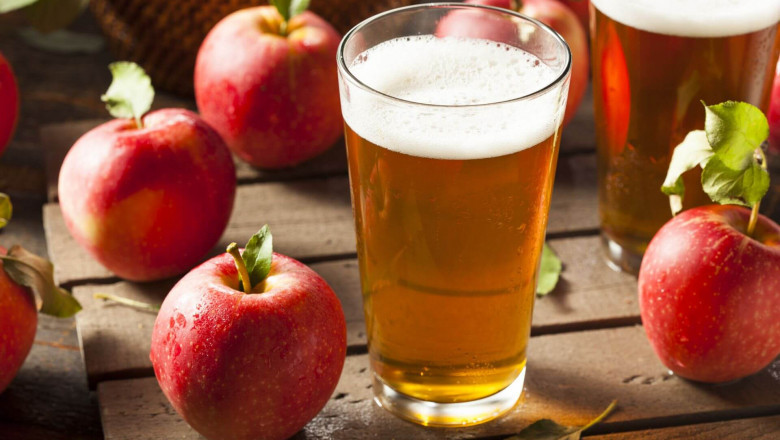views
Origins of Cider Making
Cider has a long history that traces back thousands of years. Some of the earliest evidence of cider production comes from ancient Egypt, Greece, and Rome where apple trees were commonly grown and wild fermentation was used to make alcoholic drinks from apple must. As apple cultivation spread throughout Europe during the Middle Ages, cider became an important beverage, especially in England, France, Spain and Portugal. Cider remained a popular drink among both wealthy landowners and working class communities through the 19th century. Orchards sprang up across European and American countryside, ensuring a steady supply of apples for cider production.
Apple Varieties and Juice Extraction
There are over 200 varieties of apples used for Cider making worldwide, with some varieties more popular in certain regions. Commonly used varieties in England include Dabinett, Yarlington Mill and Harry Masters Jersey which yield tannic ciders. In Normandy, France, bittersweet varieties like Bittersweet and Michelin are favored. North American ciders often incorporate multiple varieties like Golden Russet, Ashmead's Kernels and Hudson's Golden Gem.
Once the apples are harvested in fall, the first step is to press the fruit to extract the juice. Traditional presses used wooden racks and racks to squeeze the juice from pomace. Modern mills employ roller crushers to grind apples into a slurry and presses extract 4-5 gallons of juice per bushel. Hydraulic presses are also common, applying extreme pressure to maximize juice yield.
Fermentation and Aging
The extracted apple juice, known as cider must, is then placed in large fermentation vessels where yeast is added to begin the alcoholic fermentation process. Yeast varieties like Saccharomyces cerevisiae convert the natural sugars in the juice primarily into alcohol and carbon dioxide over 1-4 weeks, producing a young brut or dry cider of 5-7% ABV.
For cider styles requiring more complexity, the fermented cider then undergoes malolactic fermentation where lactic acid bacteria transform harsh malic acid into softer lactic acid. This process reduces acidity and produces creamy flavors akin to chardonnay.
Additional Aging, Blending and Flavoring
Traditional English and French ciders are often aged for 6 months to 3 years in vessels like wooden barrels, vats or bottles. Extended aging develops rounder flavors as tannins from yeast and apple skins soften over time. Many modern cidery's emphasize blending different apple varieties and vintages to create complex house styles.
Some cider makers will also incorporate techniques like barrel aging, bottle conditioning, or additions of juice, spices and herbs during various stages to develop specialty products. Examples include rose or stonefruit-infused cider, barrel-fermented editions with whiskey or wine characteristics and ice ciders made from frozen concentrated juice. Finally carbonation, pasteurization, or filtration prepares the cider for consumption.
Craft Cider Renaissance
Following decades of industrialized mass-production in the 1950-2000s, a craft cider renaissance began around 2010 as small artisanal orchards and taprooms opened across Europe and North America. This new generation emphasized heritage apples, natural fermentation methods and intricate blending to revive traditional styles and innovate new products. The number of cideries in the U.S. alone grew from 60 to over 1000 in the past decade.
Modern tasting notes for well-made cider can include aromas and flavors reminiscent of ripe orchard fruits like pear, quince and apple combined with honey, vanilla, tropical notes or even savory elements derived from native yeast and extended barrel aging. The variability of terroir, apples and techniques results in an incredibly diverse global cider culture worthy of appreciation and study. While industrial ciders still dominate global volume sales, craft producers continue expanding orchard plantings and developing new expressions that capture the essence of different apple growing regions.
Get this Report in Japanese Language-サイダー
Get this Report in Korean Language- 사이다
About Author-
Money Singh is a seasoned content writer with over four years of experience in the market research sector. Known for her strong SEO background, she skillfully blends SEO strategies with insightful content. Her expertise spans various industries, including food and beverages, biotechnology, chemical and materials, defense and aerospace, consumer goods, etc. (https://www.linkedin.com/in/money-singh-590844163)






















Comments
0 comment